This article appeared in the Fall 2021 issue of This Old House Magazine.
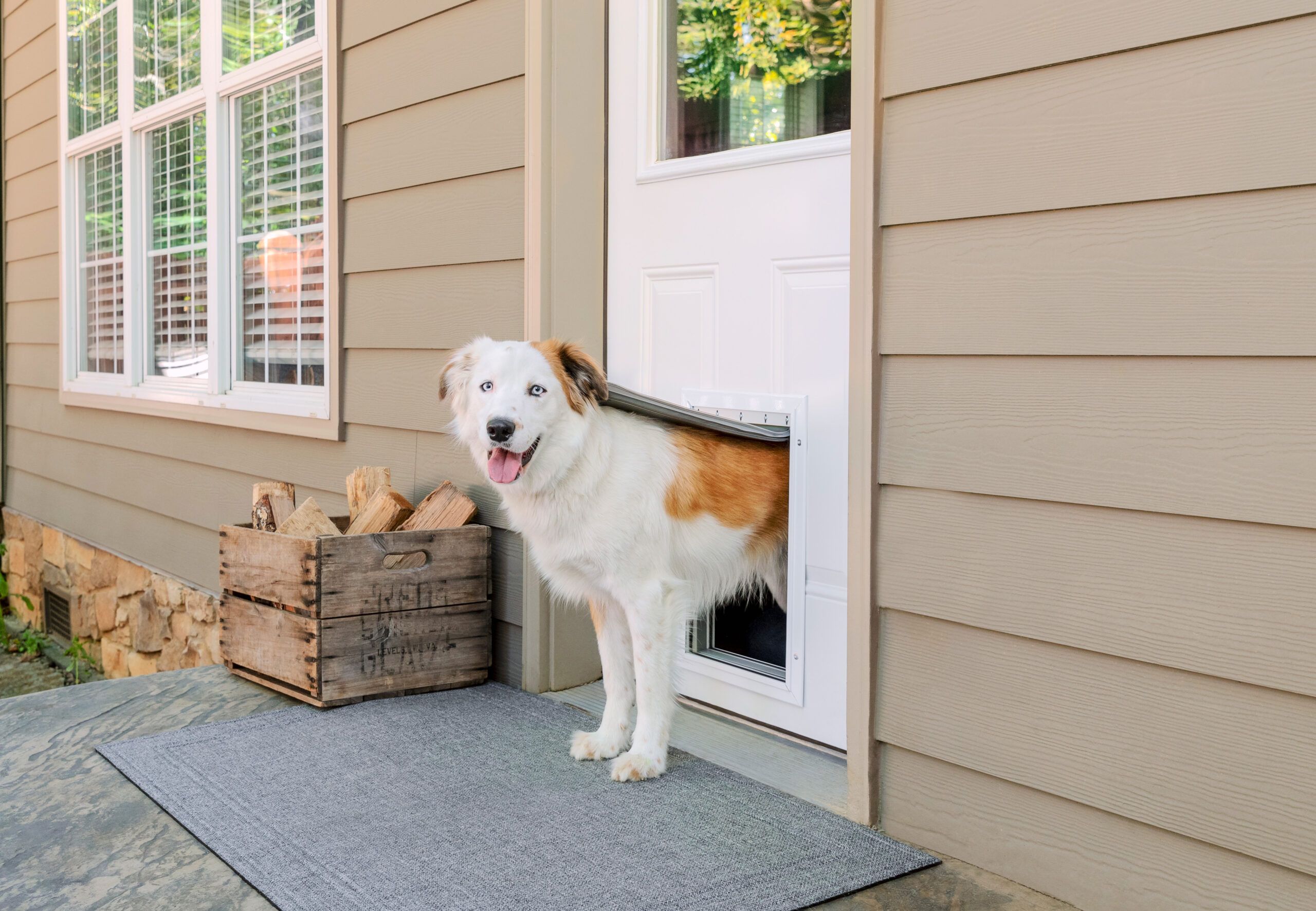
While most homeowners wouldn’t trade their dog for the world, having a furry family member means dealing with some inconveniences. A daily one: getting up to open the door every time your pup wants to go out. A dog door minimizes that hassle.
But people often hesitate to add one because they don’t want warmed or cooled air escaping, or they’ve heard stories about intruders getting in. TOH general contractor Tom Silva knows a little something about this. His then 90-year-old mother once wriggled through the family shar-pei’s dog door when she got locked out of his brother Dickie’s house. “She told us she just crawled in, no problem,” he recalls. The story might have been good for a laugh, but it also illustrates how a dog door can leave your home exposed.
Luckily, today’s dog doors have gotten better at keeping the outside out, with weather-resistant flaps and sensor controls. Here’s what to consider when choosing one for your own home.
How to Fit a Dog Door
There are dog doors for glass, fiberglass, wood, metal, and screen doors, as well as patio sliders and French doors—and walls, too (see “Pick Your Type,” below). The flaps themselves range from flexible plastic—good for older, slow-paced dogs—to rigid panels; some have saloon-style double doors, and there are higher-priced models with motorized doors that retract up inside the door or wall.
Dog doors typically come in four sizes, from small to extra-large, based on the weight of the pet they’ll accommodate. You’ll also want to measure from the floor to the top of your dog’s shoulders when he is standing. Then, when installing the dog door, allow for about a 2-inch clearance between your dog’s back and the top of the opening.
Doggie Door Options
There’s a wide range of dog door options to suit different climates, layouts, and budgets.
Boost security with a sensor or add patio door access
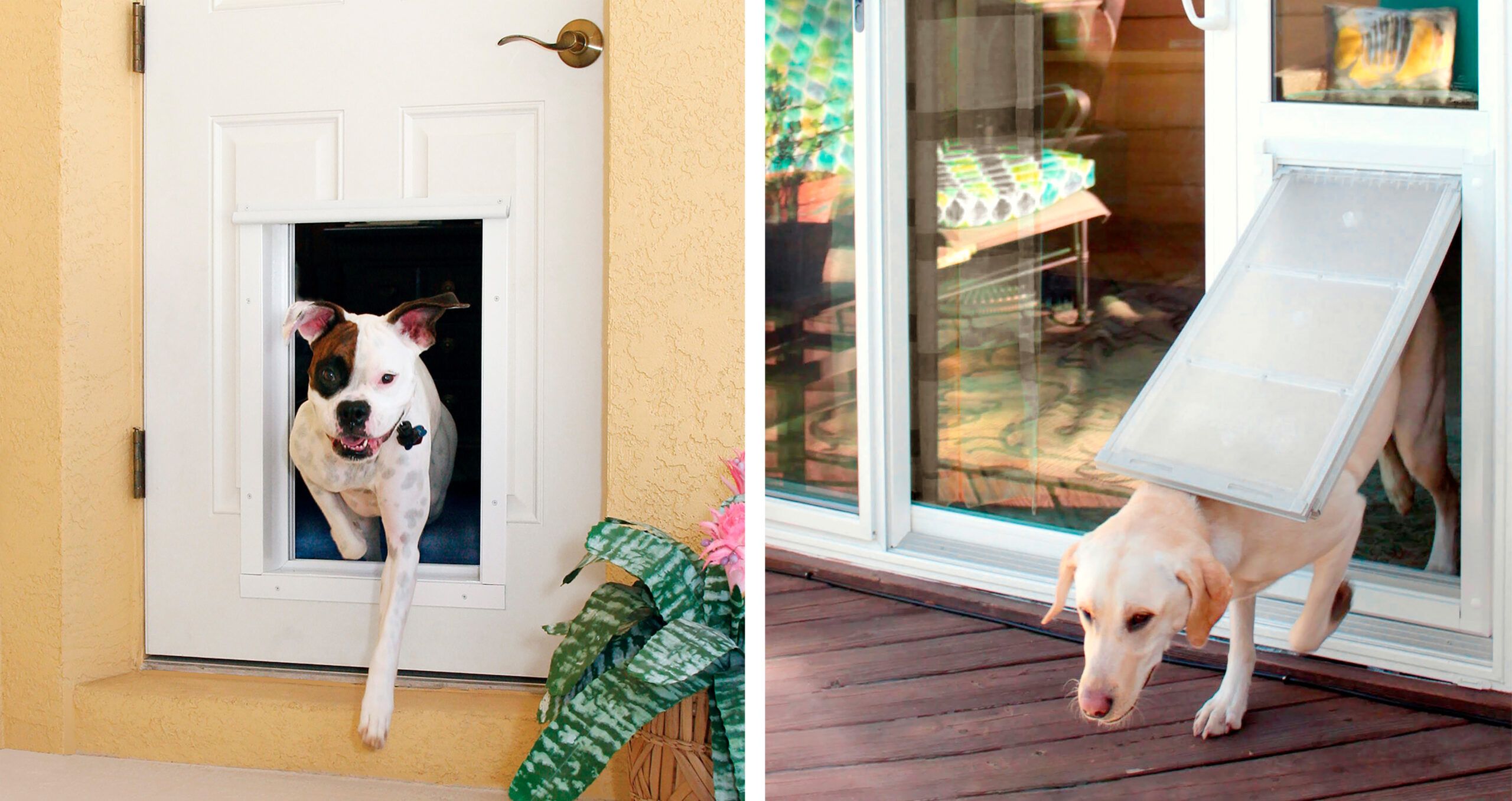
Left: Electronic dog doors open only when triggered by a fob attached to your pet’s collar. Some have flaps that open saloon style or retract up inside the door (or wall).
Right: Spring-loaded or adhesive panels are an affordable way to add pet access to a sliding door. Some models have energy-saving dual-pane low-e glass.
Integrate the entry or make a big entrance
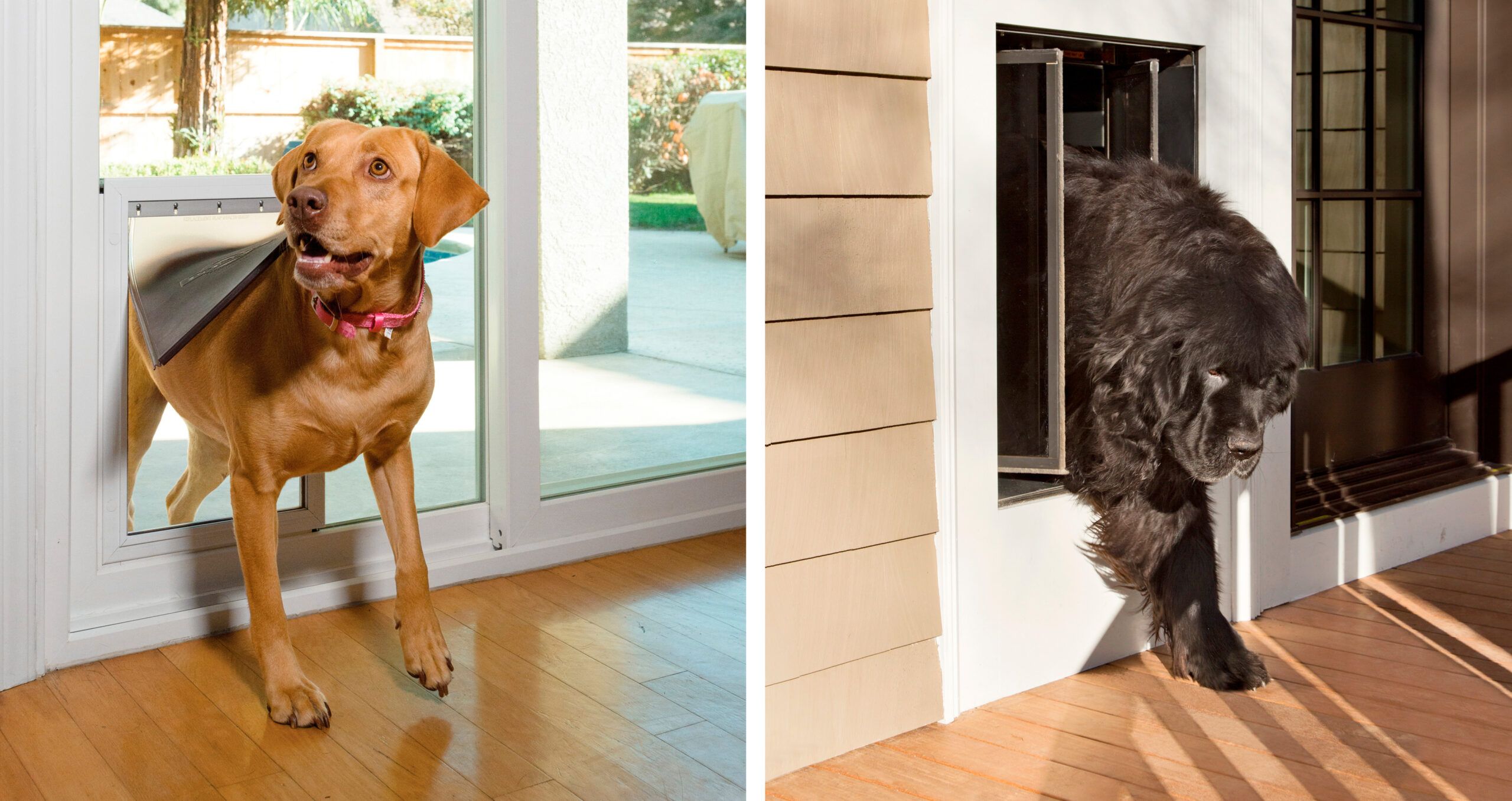
Left: A new patio, entry, or storm door that comes with built-in pet access offers a more streamlined and sophisticated look.
Right: Extra-large dog doors accommodate breeds of up to 220 pounds. Soft flaps and saloon-style doors may be more comfortable for a big, slow-moving pet than a rigid panel would be.
Types of Dog Doors
Door in door
Many dog doors come as kits to be installed in the lower portion of your door. This can be a DIY project, unless it’s for a glass storm door, which requires special tools. Keep in mind that cutting a hole in an entry door to install a pet door likely voids the warranty.
For a more polished, cohesive look, consider replacing an entry, storm, or sliding door with one that has built-in pet access added at the factory, such those made by Vintage Doors.
Sliding door panel
Homeowners with sliding patio doors can buy a vinyl or aluminum sidelight frame with a glass or plexiglass panel on top and a dog door below. These mount between the edge of the slider and the jamb and are held in place with double-sided tape or a spring-loaded top, so they’re easy to remove for seasonal use.
The downside is that they narrow the opening that people use. Also, the patio door’s original lock won’t work anymore, so most brands include a latch kit to secure the slider.
Through the wall
Adding a dog door through a wall makes sense in some situations where a door doesn’t exist—maybe you want to take advantage of existing security lighting outside or a fenced-in side yard, for example. And a wall opening with steps or a ramp can make comings and goings easier for small dogs or older ones.
Most door kits also work as through-the-wall installations. Take into account the depth of the wall first; anything thicker than common 2×4 construction may require an adapter.
How to Secure Your Dog Door
Flexible plastic flap designs, the least expensive option, may suffice for occasional daytime use, as long as they can be blocked off at night and when no one is at home, usually with a metal accessory panel placed over the door. But the newest generation of products do a better job of addressing security concerns.
So-called “smart” dog doors, which operate electronically, are powered by batteries, plugged in a wall outlet, or hardwired to open only when they sense a fob on your dog’s collar. The fobs are usually magnetic or use radio frequency identification (RFID) technology—typically they release the lock, and then your dog can push through the door, but in some models, the fob triggers the door to move up and down, like an automatic garage door.
Electronic dog doors help prevent other animals from sneaking in, and they can be scheduled so they work only at certain times of day. Put one on a timer so your pet can access it from 5 to 9 P.M. when you’re home from work, for example, and then lock it overnight.
A dog door that’s not electronic can be made more secure by adding a device that alerts you when the door is used, like a contact sensor or motion sensor as part of a smart home system. And nearly every type of dog door comes with a secondary panel that slips into the frame and locks when it’s not in use.
Most models also let you lock access in one or both directions, so your pet can walk out but not back in, for example. This keeps muddy dogs (and critters) from running through the house. When installing a dog door, make sure it’s not within easy reach of a door handle or window, in case someone tries to slide an arm in. This is especially important if you have a big dog, since openings for large breeds can be 2 feet tall.
Custom Solutions
Undercabinet hideaway
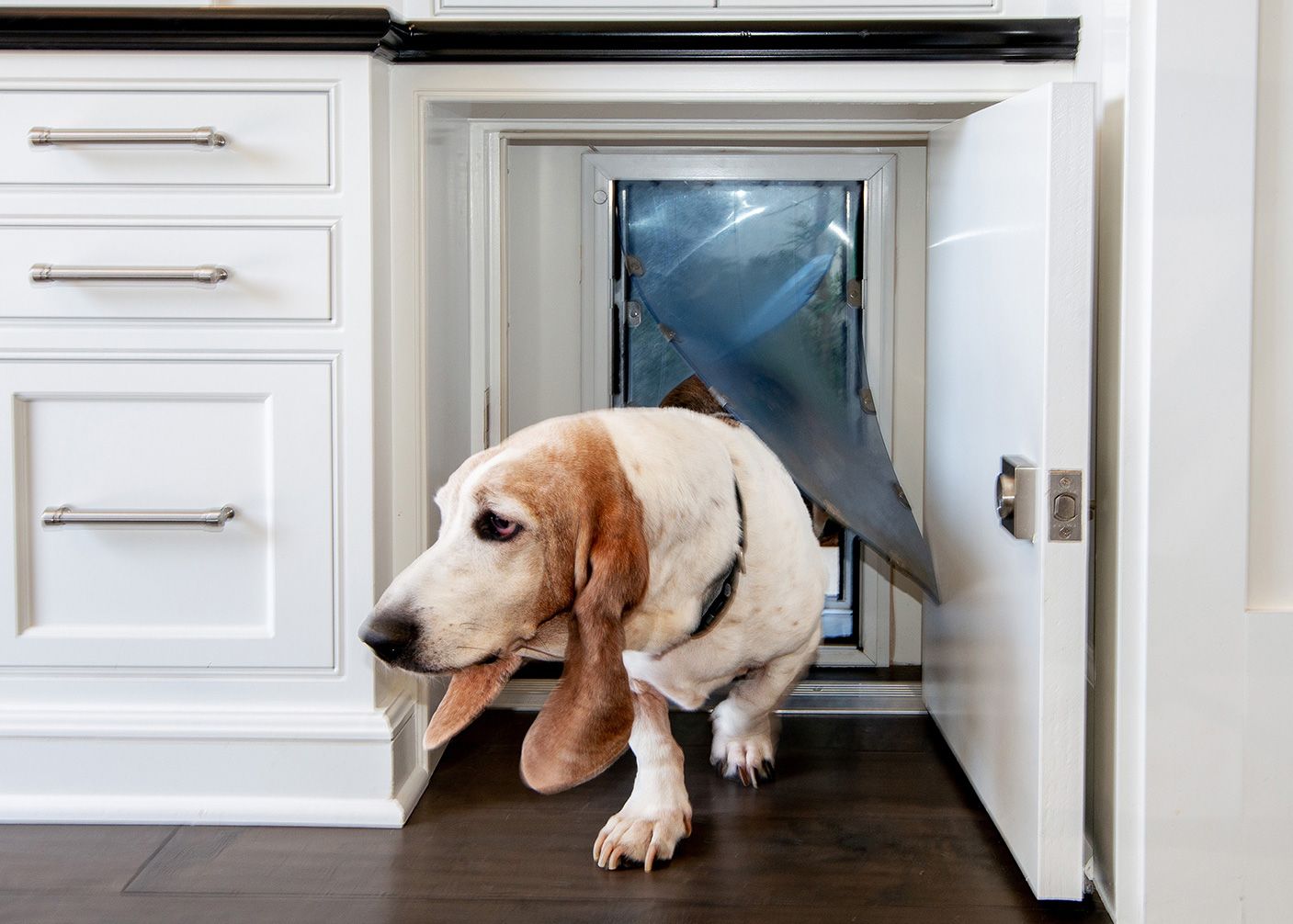
One smart way to hide the plastic flap of a through-the-wall door and secure who comes and goes? Place the pet entry in a base cabinet. Here, an aluminum threshold protects the sill, and a solid wood door is secured with a turn bolt. The painted finishes on the interior blend with the rest of the kitchen.
Doghouse tunnel
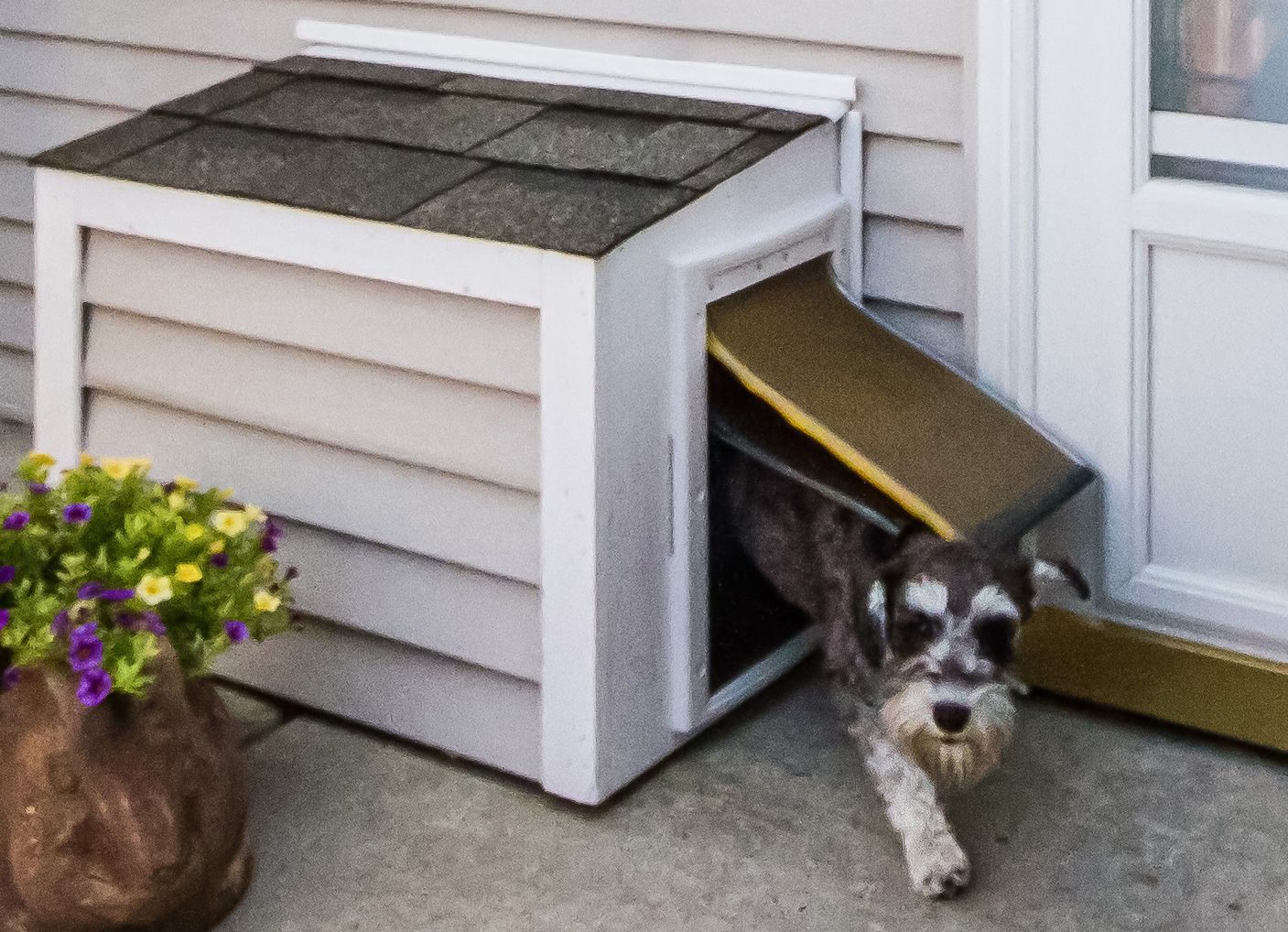
This clever bumpout makes the pet entry more secure and energy-efficient. The structure acts as a buffer zone, with weather-resistant rigid flaps at either end. Its 2×4 framing—sized to ensure the dog has enough space to turn around inside—is wrapped with trim, siding, and asphalt shingles to match the house for an integrated look.
Keep out the cold (and wet)
There’s no way around it: Putting a hole in the house means you’re losing energy. “It’s a trade-off that you make—you gain convenience, but you lose some energy efficiency,” says Tom.
Look for a flap model that has a beefy, weather-resistant gasket or a door made with insulated glass, and use the security panel to block wind, rain, and snow from getting into the house. Installing a dog door kit yourself?
Have extra weatherstripping and exterior-grade caulk on hand to ensure the dog door frame seals tight against the opening—that way, your pet can roam freely while your house stays as dry and draft-free as possible.
